On our fourth day in Córdoba, we took a short trip to Alta Gracia, a town less than 40 km from the provincial capital.
Alta Gracia is most famous for being the home of Ernesto Che Guevara during his childhood and youth (after his family moved in from Rosario, looking for a climate better suited to Ernesto's asthma). It was originally a Jesuit town, so there's also a Jesuit church and mission, and other signs of the presence of these enterprising religious order. And it's the place where the Spanish composer Manuel de Falla came to rest during the last four years of his life.
It's a quiet town, with an abundance of simple, sturdy white houses along meandering streets; parts of it climb into the surrounding hills, full of green. A stream runs through the western, older part of town.
We arrived before noon after a one-hour trip from Córdoba City and discovered that the bus terminal lacked an information booth. We had passed the busy touristic part, and now we had no maps, no-one to point us to where we should go. I found a large map glued to the inside of an empty office, and took pictures of it. After a long while, following the zoomed image in my camera's screen, we got to the closest marked spot, the Manuel de Falla Museum.
This was a good way to start the day, because the museum was wonderful. De Falla moved to Argentina in 1939, after the Spanish Civil War, and to Alta Gracia in 1942, looking for peace and quiet — and I'm sure he got plenty. The house he rented was designed specifically for the needs of the sick, with plenty of natural lighting in all the rooms, and a gallery to spend the day in the sun.
De Falla had a chronic condition and this was exactly what he needed. After his sister became a widow, she took care of him, while he worked on the cantata Atlántida, which he never finished. He died in 1946. His remains were taken back to Spain by request of the dictator Francisco Franco. De Falla was a very devout Catholic and a lover of things traditional and Spanish, so Franco viewed him as ideologically OK. We don't know how De Falla he felt about Franco, but he sure didn't like his intellectual friends being murdered or forced into exile for political reasons, and his country torn apart by war; that and the ensuing solitude and desperation, according to the museum's guide, was the reason why he moved to Argentina, where he had played concerts before. He was buried in the cathedral of Cádiz, his city of birth, and his personal effects were taken to Spain, but decades later many of them were brought back to Alta Gracia.
After this nice tour, we followed the map to the home of Che Guevara. The contrast couldn't have been greater. Where the De Falla museum was peacefully empty, quiet and unassuming, Guevara's childhood home was full of noisy, rude tourists, stuffed with souvenirs and trinkets, all of it recognizable from a block away. I hated every moment I stayed in there. Besides the many photographs, there was nothing of interest except a replica of the famed motorcycle (the one in The Motorcycle Diaries).
At the porch there was a very badly done bronze statue of little Ernesto for the tourists to take pictures beside it, and an equally horrible bust of Guevara in a corner. Granted, this was the peak hour of the busiest weekend in the whole tourist season, so you might find fewer people at other times, and if you really appreciate Guevara you may be inspired by his lingering presence in this place while there's no-one stepping on your toes. But Guevara didn't actually do anything here.
Next we looked for a place to eat lunch. It was the hottest time of day. Once the sun went down a bit, we went back to the stream and spent some more time there, just relaxing. Then we dragged ourselves to the Jesuit historical core.
The Jesuits weren't people to just come and build a church. They built whole towns around their churches. It's all a World Heritage Site now. The church is surprisingly well preserved, as are the courtyards and galleries around it.
In front of it there's the Tajamar, a wall that the Jesuits used to dam the stream and create a reservoir for their water needs. Nowadays the water level at the Tajamar is usually low, the water is green and stagnant and covered with plants, although it surprisingly doesn't stink. Birds live around it, and people fish in it too. It's a nice sight when the sun goes down and the ancient buildings and the trees are reflected in the surface.
And that was the end of our visit to Alta Gracia, and probably the best day in our vacations. We took the bus right there beside the Tajamar and arrived back in Córdoba as night settled in.

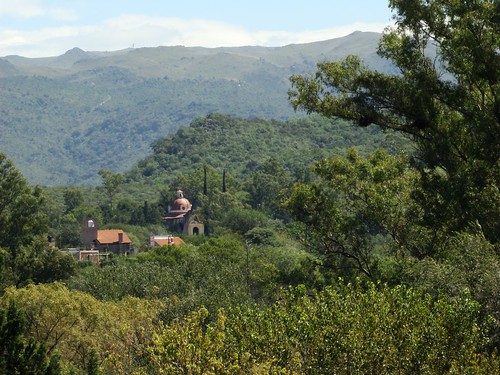
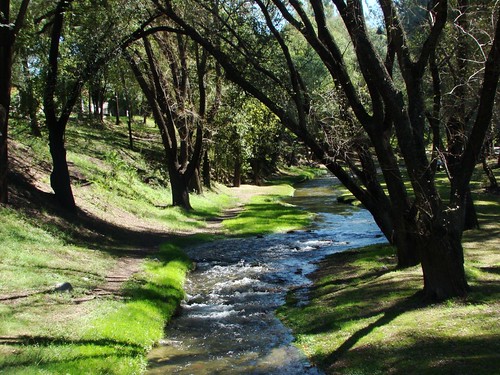

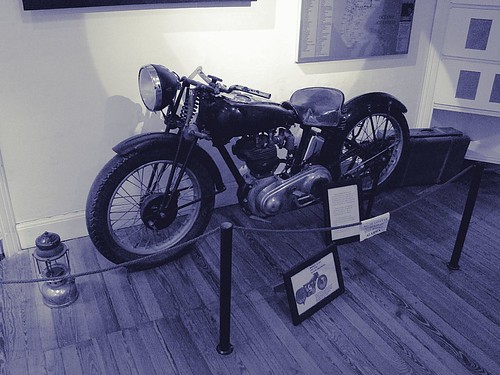
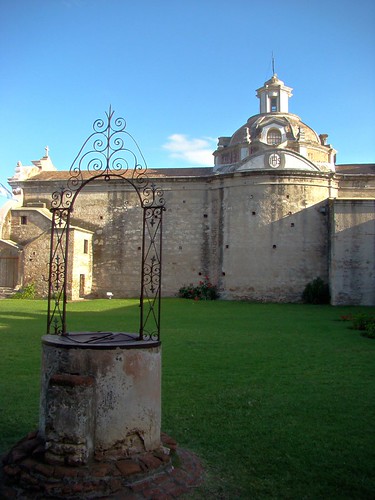
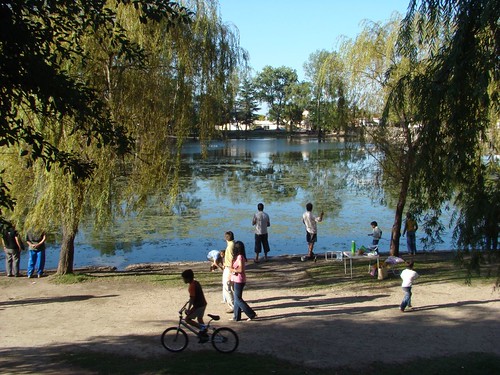












No comments:
Post a Comment
Note: Only a member of this blog may post a comment.